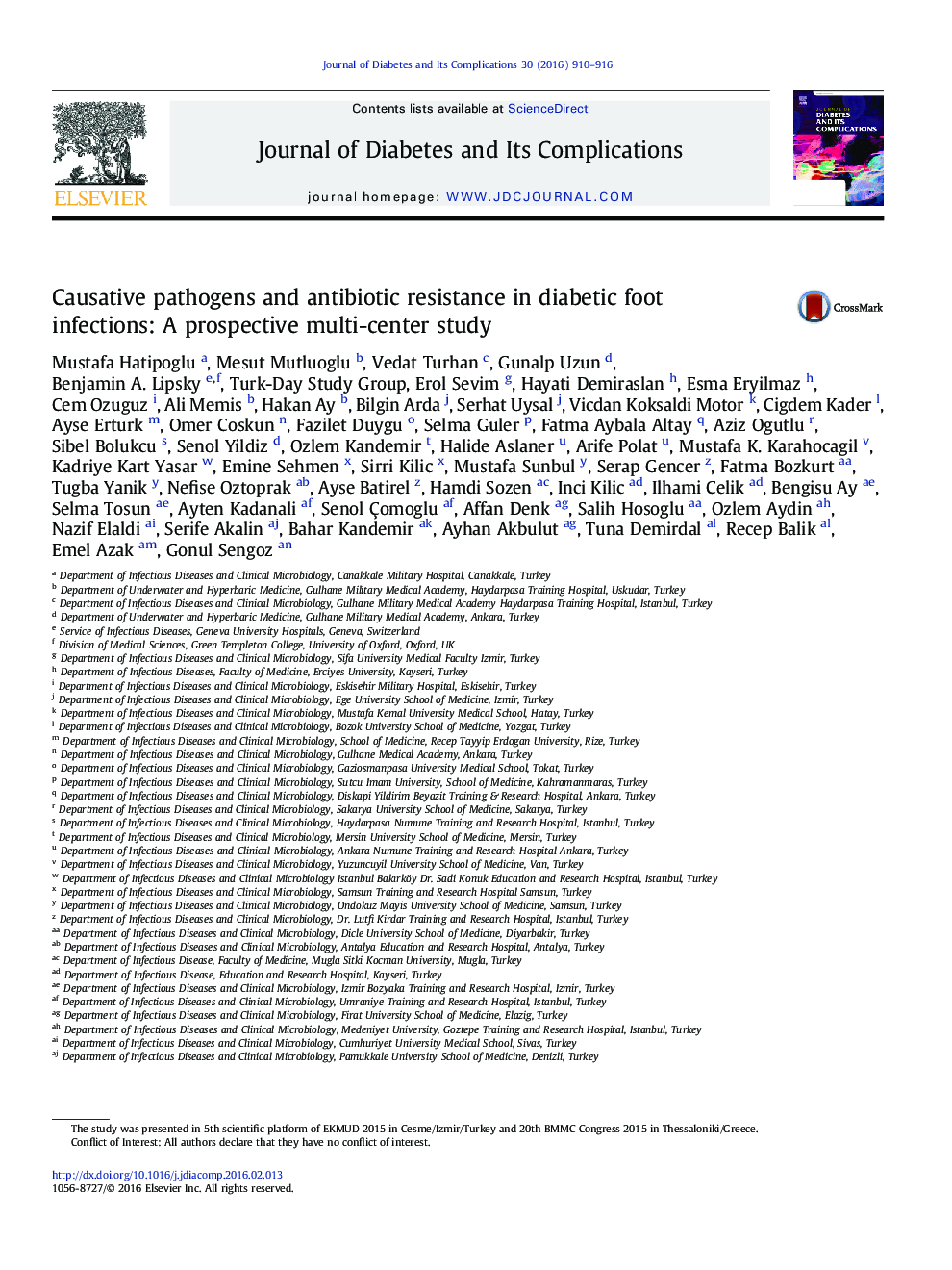| Article ID | Journal | Published Year | Pages | File Type |
|---|---|---|---|---|
| 2804098 | Journal of Diabetes and its Complications | 2016 | 7 Pages |
AimClinical practice guidelines for the management of diabetic foot infections developed by the Infectious Diseases Society of America (IDSA) are commonly used worldwide. The issue of whether or not these guidelines need to be adjusted for local circumstances, however, has seldom been assessed in large prospective trials.MethodsThe Turk-DAY trial was a prospective, multi-center study in which infectious disease specialists from centers across Turkey were invited to participate (NCT02026830).ResultsA total of 35 centers throughout Turkey enrolled patients in the trial. Overall, investigators collected a total of 522 specimens from infected diabetic foot wounds for culture from 447 individual patients. Among all isolates, 36.4% were gram-positive organisms, with Staphylococcus aureus the most common among these (11.4%). Gram-negative organisms constituted 60.2% of all the isolates, and the most commonly isolated gram-negative was Escherichia coli (15%). The sensitivity rates of the isolated species were remarkably low for several antimicrobials used in the mild infection group.ConclusionsBased on our findings, several of the antimicrobials frequently used for empirical treatment, including some also recommended in the IDSA guidelines, would not be optimal for treating diabetic foot infections in Turkey. Although the IDSA guideline recommendations may be helpful to guide empiric antimicrobial therapy of DFIs, they should be adjusted to local conditions.
